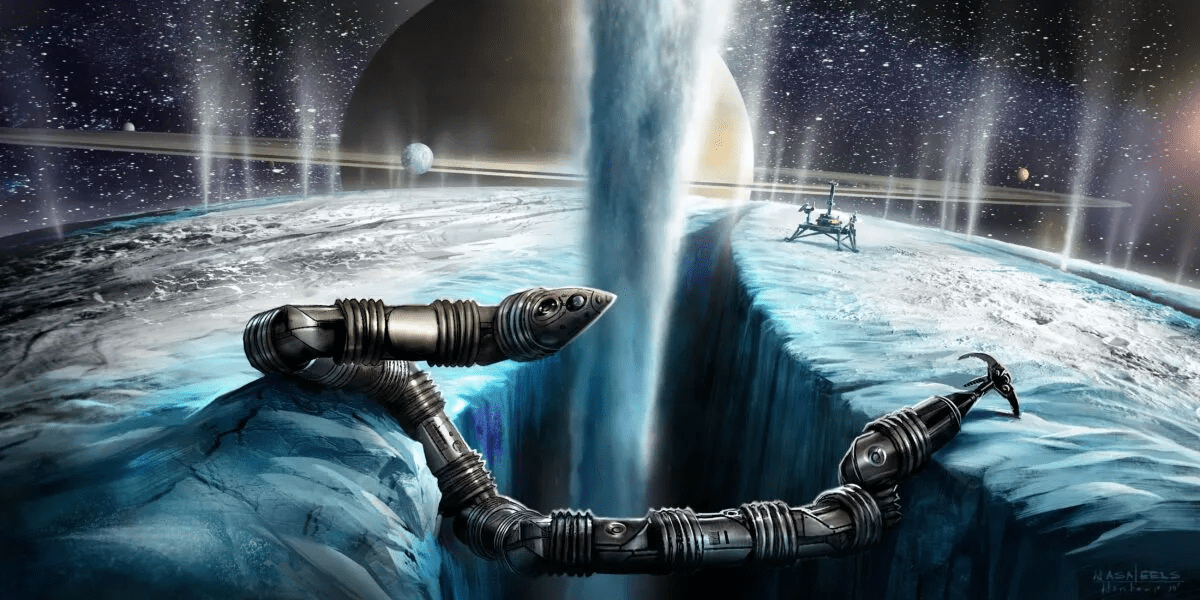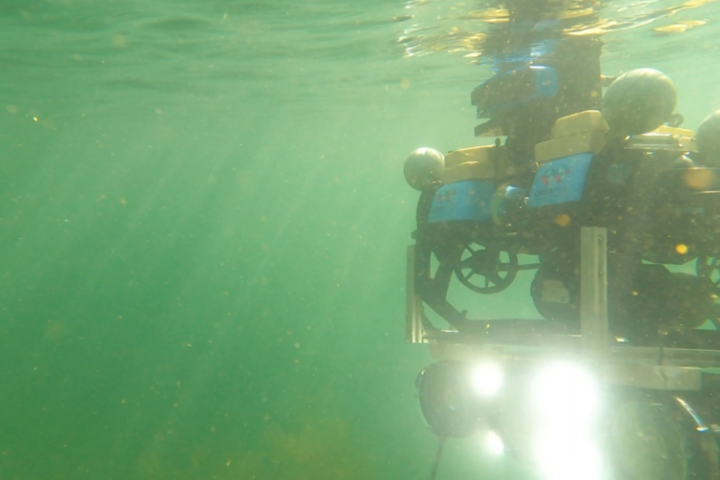NASA’s Jet Propulsion Laboratory (JPL) is developing a snake-like robot called Exobiology Extant Life Surveyor (EELS) to explore otherworldly terrains and search for life beyond Earth.
EELS will use its spinning wheels to crawl down crevasses and swim through water in search of potential pathways to a habitable liquid ocean on Enceladus, a small icy moon of Saturn. The plumes erupting from Enceladus’ surface serve as direct conduits to the liquid water beneath its icy crust, making them potential pathways to a habitable liquid ocean.
EELS’ innovative rotating propulsion units function as tracks, gripping mechanisms, and underwater propeller units, allowing the robot to explore previously inaccessible areas. Dr. Martin Robinson, the project manager, envisions a platform that could explore any location, including descending into lunar lava tubes.
EELS’ adaptability makes it suitable for exploring other destinations like Martian polar caps and crevasses in Earth’s ice sheets. JPL is collaborating with Earth scientists to identify high-priority, high-impact terrestrial scientific investigations that can demonstrate EELS’ capabilities in a planetary analogue environment.
Tests have already been conducted inside Canada’s Athabasca Glacier and Mount Meager Volcano to demonstrate EELS’ capabilities in such environments. Enceladus has become a promising target for NASA in its search for life due to its global ocean and internal heat.
The discovery of potential life on Enceladus would be a significant achievement, signifying that we are not alone in the universe. Discovered in 1789, Enceladus is Saturn’s sixth largest moon.
EELS’ actuation and propulsion mechanism, driven by power and communication electronics, enables it to explore internal and enclosed dynamic terrain structures to assess evidence for life. EELS’ versatile, highly intelligent, and super awesome snake-like robot can help in exploring those areas that were once inaccessible.


















